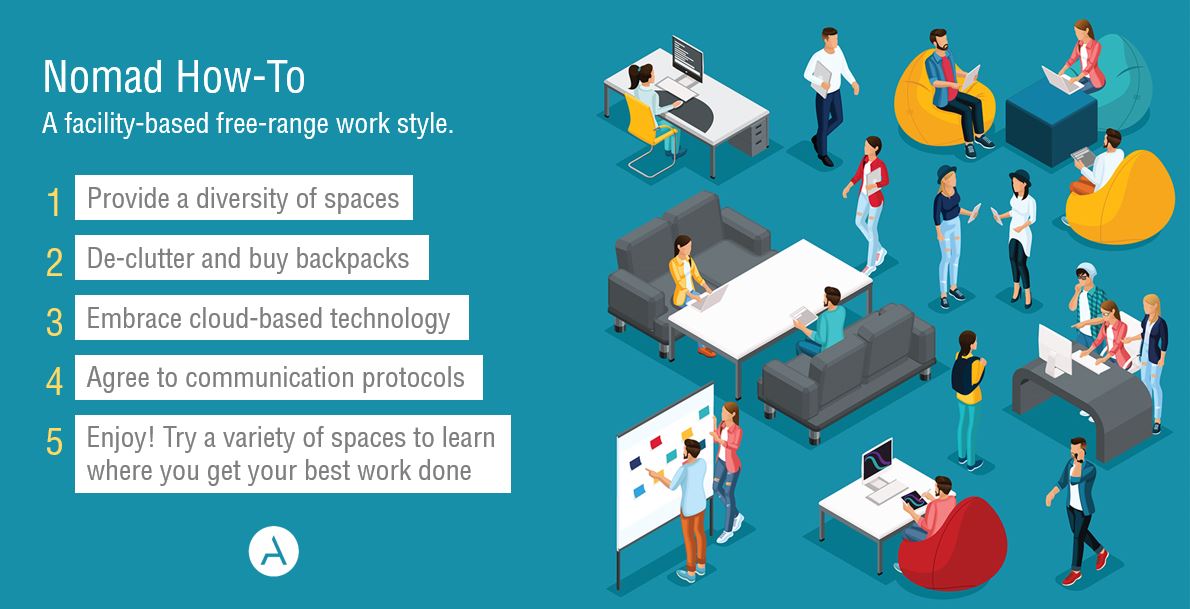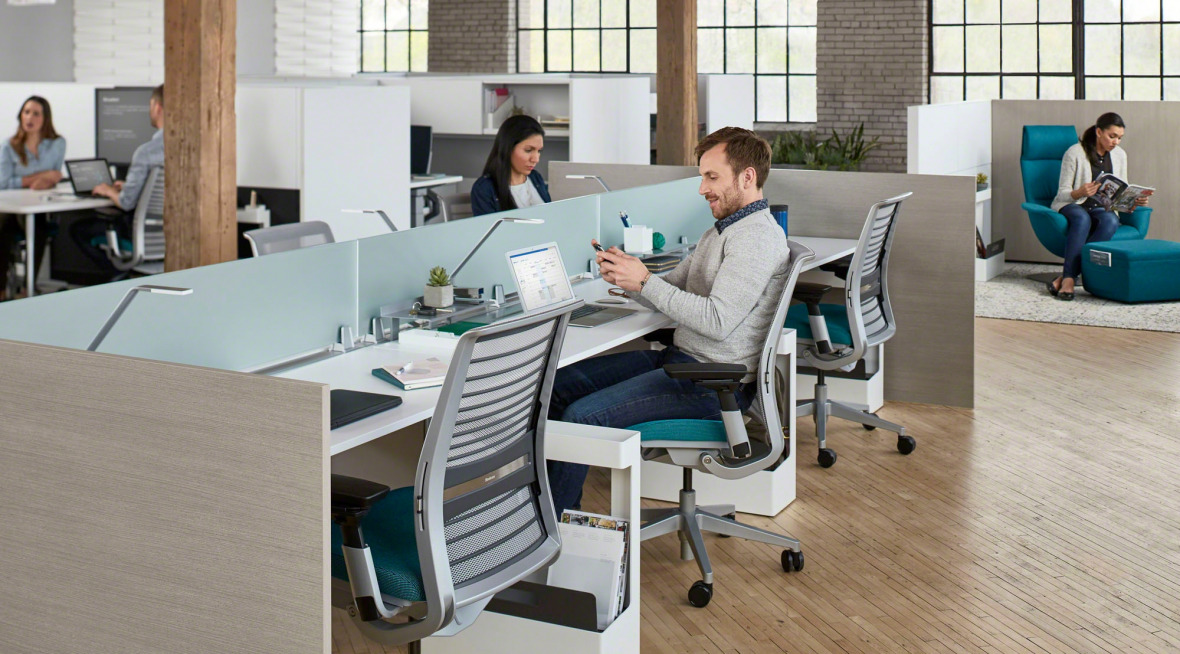You are now free to roam about the office
As our Minneapolis office is undergoing a WorkLab makeover, our team members are also in the midst of their own transition as they embrace a Nomadic style of working. But instead of sending our Nomads out of the office, we are providing a variety of destinations within the built environment that are designed to meet a diversity of workstyles.
Unlike hot-desking or hoteling where people simply rotate through a single workspace that is dependent on scheduling, Nomads are free to choose the best destination that works for them within the facility.
To begin the transition from a resident worker with a dedicated workspace, our team members are cleansing themselves of clutter and choosing to embrace this workplace trend that gives them a new kind of freedom.
These brave souls are ditching desks with nameplates and drawers filled with family photos in exchange for remote technology and a tote for carrying only the essentials.
Take it from an insider
I had the opportunity to speak with Sheila Berndt, a Senior Account Manager at our WorkLab in Minneapolis. Sheila made the transition to a Nomad as part of a pilot group in October of 2016, after 17 years as a traditional, resident worker.
Sheila shared with us her reason for going Nomad.
“It was a professional and personal challenge to see if I could hatch out of the standard individual desk environment and literally carry my desk with me and be productive no matter what my physical location was. Having been a Nomad since last October has made me realize how important it is to save documents where they can be easily retrieved, and the fewer items I carry with me, the lighter my bag is.”
Having a nomadic status allows you to choose a workspace that speaks to you. Whether it be a work café, lounge, open workstation, or even a local coffee shop, Nomads have the freedom to work in spaces they feel generate creativity and productivity. Sheila gave us some valuable insight into how Nomads can be beneficial to both an individual and an organization.
“I think the most positive benefit has been choosing where to work on any given day whether I’m in the office or out. I’ve been more accessible when I’m in the open with other team members when I’ve been in the Minneapolis office and I was blessed enough to work the last several days from a coffee shop on the shores of Lake Michigan which boosted my mental and emotional health immeasurably. As always, a healthy emotional and mental state can only lead to positive outcomes in any given situation, which is always a benefit to the individual and the company!”
Will the nomadic trend thrive? Will it fizzle out? We asked Sheila her thoughts on the trend’s future.
“I think we are in the midst of an office renaissance and we will have to see if the nomadic trend can be a successful one. I find one of my biggest struggles is the perception that some have- that if you are not in an office, you are not working.”
When your cubicle is all you know, the process of becoming a Nomad can leave you feeling a little lost at first. To help settle the nerves, Sheila gave us some tips and tricks to help prepare like a pro for the transition.
“Take it as you would any other change in your life, small steps of reducing the amount of stuff you have around you every day. And like any transformation, it’s done slowly at first and then one day, you look around and you have your laptop and power cord and sometimes you don’t even need your power cord.”
This begs the question, is going Nomad for you? Sheila gave us her overall thoughts on rethinking the conventional workplace.
“I think if someone believes they can break from traditional modes of business behavior and find ways of being more productive inside and outside 4 walls, the individual will benefit from the knowledge of overcoming challenges that aren’t necessarily presented in a static work environment.”
And a final point, and tip, on how becoming a nomadic worker can affect your co-workers.
“Skype. Don’t under-estimate it’s value. It’s really important to use technology to ensure that your co-workers can find you. Time can be wasted searching for someone. If they can see your Location and Status at a glance, that’s the most effective way to help them easily find you.”
Speaking of technology
In a parallel technology strategy, we are migrating from on-premise business tools to the cloud. This is well-timed as we transition to a nomadic way of working, as we are utilizing cloud-based services to complement a newly-minted full-time mobile workforce. So, on- and off-site roaming will be a more seamless experience.
All Team Members are also 100% connected by WiFi, helping to eliminate some cables altogether.
Change management
To manage these changes, we are streamlining our facility resources, such as protocols and way-finding and zone maps, and delivering them in a way that’s compatible with mobile devices. Walk-throughs and training will be required for every staff member.
Our new protocols for the space will include guidelines and support for nomadic workstyles, nomadic work zones, and mobile work.
In summary
To understand the local Nomad trend, think about how appealing it is to work at a library or co-working spaces. No one tells you where to sit and work. Except you want to come in to the office because the space now beats Starbucks or [insert your favorite trendy meeting spot here] hands down as the ideal place to get work done.
Steps to become a local Nomad:


